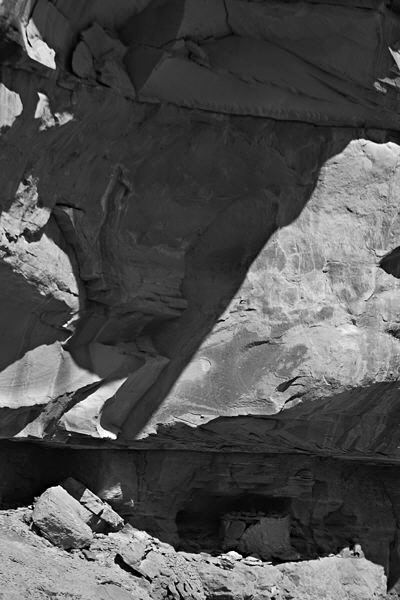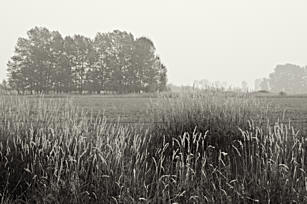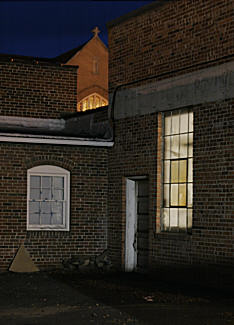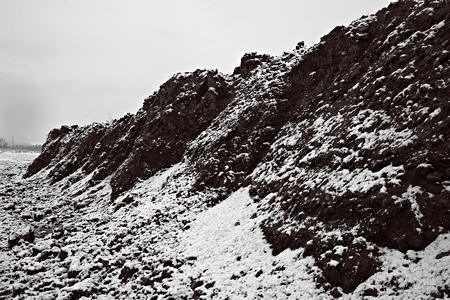Posted by Steve Durbin on May 4th, 2007
OK, this is a hoary topic vulnerable to nit-picking definitions and over-intellectualizing (not that those serve no purpose). But it was brought to mind today because of a comment from an artist (Molly Stevens) on an Ed Winkleman post: “Meaning is seen as romantic, outdated, idealist, basically corny.” This reminded me of Sunil’s and my own recent remarks of looking for meaning in abstraction, in counterbalance — not opposition — to June’s reveling while meaning is “beside the point.”
So my question is: what do you feel is the role of “meaning” in your own creative work? Do you have a goal or message or effect in mind while working that could be called meaningful? If so, is it perhaps a different kind of meaning from that which might be present in a more “traditional” work of art?
Posted by Steve Durbin on May 1st, 2007

I’ve just returned from my trip to Utah in pursuit of earlier denizens, the Anasazi. Like the proverbial tourist, I won’t know what it was like until I’ve seen my pictures. Not because I never took my camera from my eye — it was there less than 1% of the time — but because the trip is not over yet. I’m done exploring the canyons for now, but I’ve just begun to explore the latent content of my experiences and the images captured by my camera. That will take longer, and I know there’s plenty of discovery still to happen. Nevertheless, one idea can be identified that is not entirely a surprise.
more… »
Posted by Steve Durbin on April 17th, 2007
Ansel Adams was known for his skill in capturing monumental landscapes in massive detail. But he was well aware that sharpness for its own sake is sterile: “There is nothing worse than a sharp image of a fuzzy concept.” What would he think of this fuzzy image of a fuzzy concept?


Though this photograph appears blurred, the camera was actually quite well focused on the subject. Which was my shadow cast by the rising sun on the off-white wall of the hallway outside my office. Not period.
Despite the blur, this image may beat any of my others in conceptual edge, at least according to some who shall remain nameless. At the same time, it seems to fit my recent protestation of edgelessness (see comment 52 of last week’s post). I swear that the image, the poem(??), and the Adams quote were entirely unacquainted with each other in my conscious mind before I started writing this post. Nor, until this very moment, had any of them met William Henry Fox Talbot’s (love the names!) description of his 1839 photographic invention as “the art of fixing a shadow.” Photography and writing are sometimes parallel paths of discovery.
Posted by Steve Durbin on April 13th, 2007
It seems I’ve been seeing more and more theme cookbooks these days. I almost never look at them. And I’m not proposing that we create a compilation of “Favorite recipes from Art and Perception.” I am interested not so much in what you cook as in how you cook.
My question: Is there any connection between how you cook and how you do art?
I don’t mean to suppose that my plates have heaping mountains of textures while David’s meals are more flattened shapes like Chinese roadkill, or that Rex dines on charred tidbits while Sunil’s dishes are drenched in ketchup and mustard.
It’s more about approach, about your fundamental relation to your creations. Do your art and your cooking reveal two entirely different yous? Or is your life a seamless whole that reflects your intuitive grasp of the universe?
Are you always trying new dishes? Are they invented by you or from a cookbook? Do you follow recipes precisely? At all? Do you like to use exotic ingredients? Do specialized kitchen tools turn you on? How do you recharge your culinary batteries when you hit a slump?
I’ll provide some of my own answers, but first I have to go and make breakfast.
By the way, got any good recipes?
Posted by Steve Durbin on April 10th, 2007
 Here’s a curious tale for you: A week ago I was approached by someone interested in art collecting and in art blogging, and particularly in the interaction of the two. The C, as I shall call this beginning collector, put forward the interesting speculation that blogged artworks acquire “an aura of fame” that potentially makes them more salable. Whether that’s true or not, it probably doesn’t hurt the value of an artwork for it to be blogged.
Here’s a curious tale for you: A week ago I was approached by someone interested in art collecting and in art blogging, and particularly in the interaction of the two. The C, as I shall call this beginning collector, put forward the interesting speculation that blogged artworks acquire “an aura of fame” that potentially makes them more salable. Whether that’s true or not, it probably doesn’t hurt the value of an artwork for it to be blogged.
 It happens that A&P had come to the C’s attention, and as a way of getting hirs feet wet, the C is considering buying perhaps half a dozen prints of images that have appeared in my posts. My prints are cheap; I’m sure I wouldn’t be writing this post if your paintings, linoleums, quilts, etc. were the same! (But maybe they’ll be next.) The C had good timing, in that just a few days ago I met with a local gallery owner who was enthusiastic about showing my work in her gallery. If that works out, my prices will have to go up, at least for work being sold by the gallery. (Also, the C didn’t know it, but I currently give an unadvertised 20% discount on purchases after the first.)
It happens that A&P had come to the C’s attention, and as a way of getting hirs feet wet, the C is considering buying perhaps half a dozen prints of images that have appeared in my posts. My prints are cheap; I’m sure I wouldn’t be writing this post if your paintings, linoleums, quilts, etc. were the same! (But maybe they’ll be next.) The C had good timing, in that just a few days ago I met with a local gallery owner who was enthusiastic about showing my work in her gallery. If that works out, my prices will have to go up, at least for work being sold by the gallery. (Also, the C didn’t know it, but I currently give an unadvertised 20% discount on purchases after the first.)
more… »
Posted by Steve Durbin on April 3rd, 2007

We have some impressive mountain ranges in Montana, but this isn’t one of them. Though reminiscent of the Bridgers that stretch north of Bozeman, this is, in fact, a dirt pile. I came across it while cruising through a future subdivision, killing time before an appointment and in a mood to photograph. As a handy subject for the 20-30 minutes I had, it was about perfect.
more… »
Posted by Steve Durbin on March 30th, 2007
Over the last few months, several posters have mentioned books that have been important to them. Karl considers Cennino Cennini to have written the best how-to book for painters. Doug gave us a report on a concise and readable book about photography by Steve Edwards. Lisa Hunter talked about her own book, “The Intrepid Art Collector,” in an interview. Rex cited in one post a motivational book for painters (the correct title is “How to Make a Living as a Painter,” by Kenneth Harris). David, in a comment, recommended “Seeing Is Forgetting the Name of the Thing One Sees: A Life of Contemporary Artist Robert Irwin.”
What is your favorite art book?
 One of my mine, I just discovered, has popped up in comments a couple of times: Art and Fear, by David Bayles and Ted Orland (that’s Orland’s “One and a Half Domes, Yosemite” at left). As it happens, they are both photographers, but the book is not at all confined to photography or even visual art. As you might guess from the title, it’s a frank discussion of issues that are faced by artists that relate to making public creative work that can be very personal. Even if you’ve never been the slightest bit nervous about putting your work out there, I still think the book is helpful as an unusually readable treatment of what artists do and how they do it. It will help you think about your own process. Just read it.
One of my mine, I just discovered, has popped up in comments a couple of times: Art and Fear, by David Bayles and Ted Orland (that’s Orland’s “One and a Half Domes, Yosemite” at left). As it happens, they are both photographers, but the book is not at all confined to photography or even visual art. As you might guess from the title, it’s a frank discussion of issues that are faced by artists that relate to making public creative work that can be very personal. Even if you’ve never been the slightest bit nervous about putting your work out there, I still think the book is helpful as an unusually readable treatment of what artists do and how they do it. It will help you think about your own process. Just read it.
Over to you: help me add to the list!





 One of my mine, I just discovered, has popped up in comments a couple of times:
One of my mine, I just discovered, has popped up in comments a couple of times: